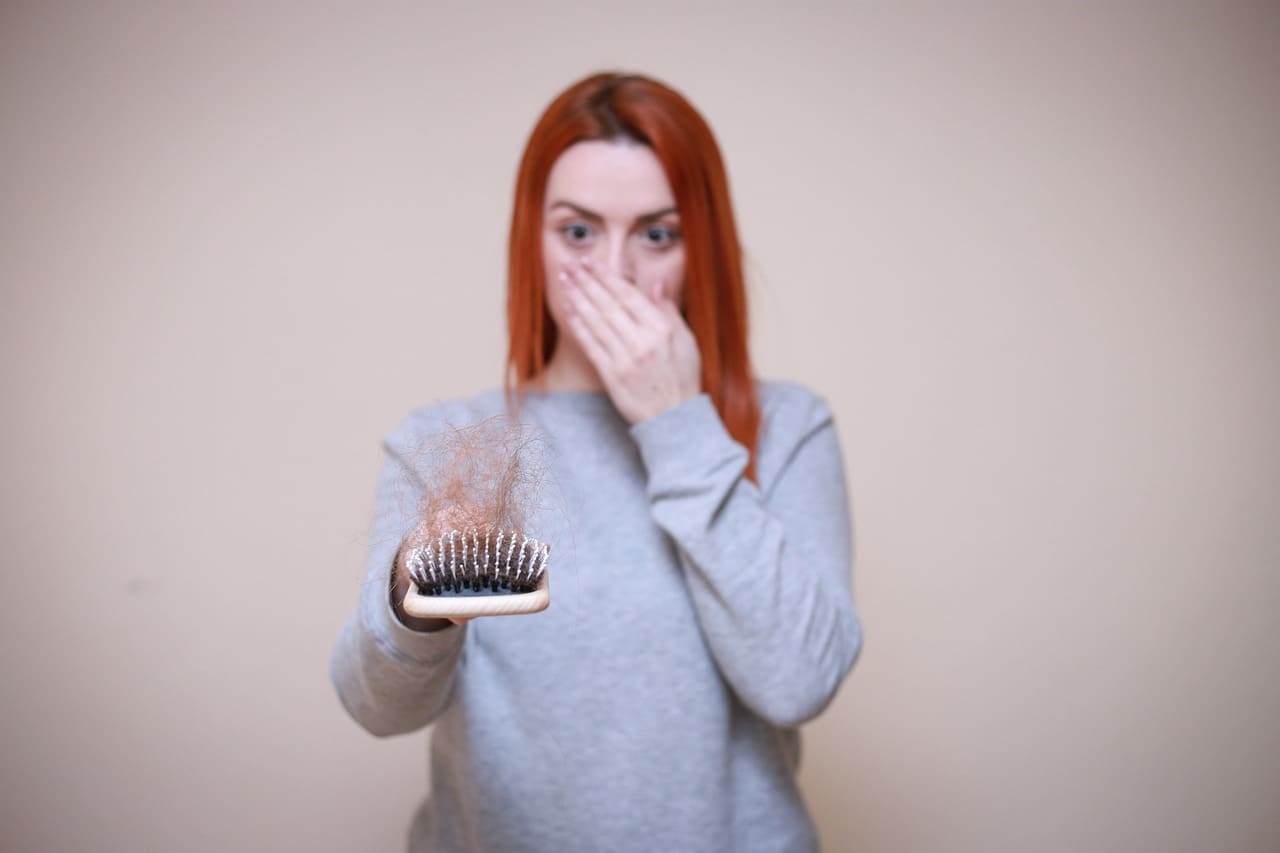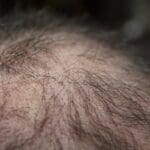Hair loss is a common concern for many individuals, and it can have a significant impact on their self-esteem and overall well-being. Understanding the causes and potential solutions for hair loss is essential for maintaining healthy hair and promoting a positive sense of self. Additionally, hair follicle testing has emerged as a valuable diagnostic tool in assessing hair health and detecting potential underlying issues.
This article delves into the connection between hair loss and hair follicle testing, shedding light on the importance of hair health in relation to overall health. By exploring the causes of hair loss, different types of hair loss, diagnostic techniques, treatment options, and preventive measures, readers will gain valuable insights into maintaining healthy hair and minimizing the risk of hair loss.
Causes of Hair Loss
Causes of Hair Loss
Hair loss can be a distressing experience for many individuals, and understanding the underlying causes is crucial in finding effective solutions. There are several factors that can contribute to hair loss, ranging from genetics to hormonal imbalances, nutritional deficiencies, and medical conditions.
Genetics: One of the primary causes of hair loss is genetics. If you have a family history of baldness or thinning hair, you may be more prone to experiencing hair loss yourself. This is known as male or female pattern baldness, and it typically occurs gradually over time.
Hormonal Imbalances: Hormonal imbalances can also play a significant role in hair loss. Conditions such as polycystic ovary syndrome (PCOS) or thyroid disorders can disrupt the normal hair growth cycle and lead to excessive shedding.
Nutritional Deficiencies: Your diet plays a crucial role in the health of your hair. Insufficient intake of essential nutrients, such as vitamins, minerals, and proteins, can result in weak and brittle hair, eventually leading to hair loss. Iron, zinc, and biotin are particularly important for maintaining healthy hair.
Medical Conditions: Certain medical conditions can contribute to hair loss. For example, autoimmune conditions like alopecia areata cause the immune system to attack the hair follicles, resulting in patchy hair loss. Additionally, scalp infections, such as ringworm, can also lead to hair loss if left untreated.
It is important to note that while these factors can contribute to hair loss, the specific cause may vary from person to person. Consulting with a healthcare professional or dermatologist can help identify the underlying cause and determine the most appropriate treatment plan.
Types of Hair Loss
Types of Hair Loss
When it comes to hair loss, there are several different types that individuals may experience. Understanding these types can help in identifying the underlying causes and determining the most appropriate treatment options. Here are some common types of hair loss:
- Male and Female Pattern Baldness: This is the most common type of hair loss, characterized by a gradual thinning of hair on the scalp. In men, it often starts with a receding hairline and bald patches, while women typically experience a widening part and overall thinning.
- Alopecia Areata: This is an autoimmune condition where the immune system mistakenly attacks the hair follicles, resulting in patchy hair loss. It can occur on the scalp or other areas of the body.
- Telogen Effluvium: This type of hair loss occurs when there is a disruption in the hair growth cycle, leading to excessive shedding. It can be triggered by factors such as stress, hormonal changes, or certain medications.
- Traction Alopecia: This type of hair loss is caused by excessive tension or pulling on the hair, often due to hairstyles that involve tight braids, ponytails, or extensions. Over time, the constant pulling can damage the hair follicles and lead to hair loss.
Each type of hair loss has its own unique characteristics and underlying causes. It is important to consult with a healthcare professional or dermatologist to determine the specific type of hair loss and develop a personalized treatment plan.
Diagnostic Techniques
Diagnostic techniques play a crucial role in hair follicle testing, allowing experts to assess the health and condition of the hair and scalp. These techniques provide valuable insights into the underlying causes of hair loss and help determine the most suitable treatment options.
One of the diagnostic techniques used in hair follicle testing is microscopic examination. This involves the use of a special microscope to closely examine the hair follicles and determine their health. By analyzing the structure and condition of the hair shaft and the scalp, experts can identify any abnormalities or signs of damage that may be contributing to hair loss.
Another diagnostic technique is the hair pull test. This simple yet effective test involves gently pulling on a small bundle of hair to assess its strength and shedding. If a significant number of hairs are easily pulled out, it may indicate a condition called telogen effluvium, which is characterized by excessive hair shedding.
In some cases, a scalp biopsy may be necessary to diagnose the underlying cause of hair loss. During a scalp biopsy, a small sample of the scalp tissue is taken and examined under a microscope. This allows experts to identify any inflammation, infection, or scarring that may be affecting hair growth.
By utilizing these diagnostic techniques, healthcare professionals can gain valuable insights into the health of the hair and scalp, helping to determine the appropriate course of action for hair loss treatment. Whether it’s microscopic examination, the hair pull test, or a scalp biopsy, these techniques provide crucial information for a comprehensive assessment of hair health.
Treatment Options
Treatment options for hair loss are diverse and cater to individual needs and preferences. Depending on the cause and severity of hair loss, various approaches can be considered to address the issue. Here are some of the available treatment options:
- Medications: There are several medications available that can help slow down or even reverse hair loss. These may include minoxidil, finasteride, and dutasteride, which work by stimulating hair growth and preventing further hair loss.
- Topical solutions: Topical solutions like serums and foams can be applied directly to the scalp to promote hair growth and improve the overall condition of the hair. These solutions often contain ingredients such as minoxidil or natural extracts that nourish the hair follicles.
- Hair transplant surgery: For individuals with advanced hair loss or those looking for a more permanent solution, hair transplant surgery can be an option. This procedure involves taking hair follicles from one part of the body (usually the back of the head) and transplanting them to the areas experiencing hair loss.
- Lifestyle changes: Making certain lifestyle changes can also contribute to healthier hair and potentially reduce hair loss. This may include adopting a balanced diet rich in vitamins and minerals, managing stress levels, avoiding excessive heat or chemical treatments, and practicing good hair care habits.
It is important to consult with a healthcare professional or a specialist in hair loss to determine the most suitable treatment option based on individual circumstances. They can provide personalized recommendations and guide individuals through the potential benefits and risks associated with each treatment approach.
Prevention and Maintenance
Prevention and maintenance play a crucial role in promoting healthy hair growth and minimizing the risk of hair loss. By adopting certain preventive measures and incorporating effective maintenance strategies into your hair care routine, you can significantly improve the overall health and appearance of your hair.
Here are some key tips and strategies to consider:
- Nutrition: A well-balanced diet rich in vitamins, minerals, and proteins is essential for healthy hair growth. Include foods like fruits, vegetables, lean meats, fish, nuts, and seeds in your diet to provide your hair with the necessary nutrients.
- Hydration: Proper hydration is essential for maintaining the moisture balance of your hair. Drink an adequate amount of water daily to keep your hair hydrated and prevent dryness.
- Gentle Hair Care: Avoid harsh treatments, excessive heat styling, and tight hairstyles that can cause damage to your hair follicles. Opt for gentle hair care practices like using a wide-toothed comb, avoiding excessive brushing, and using heat protectant products before styling.
- Regular Trims: Regular trims help to prevent split ends and breakage, promoting healthier hair growth. Aim to trim your hair every 6-8 weeks to maintain its overall health and prevent the accumulation of damaged ends.
- Stress Management: Chronic stress can contribute to hair loss. Practice stress management techniques like meditation, exercise, and relaxation exercises to reduce stress levels and promote healthy hair growth.
- Scalp Care: Keep your scalp clean and healthy by regularly washing it with a mild shampoo and conditioner. Avoid excessive use of styling products that can clog your hair follicles and inhibit hair growth.
- Protective Styling: When styling your hair, consider protective hairstyles that minimize tension and friction on your hair. Examples include braids, buns, and twists that keep your hair secure and protected.
- Avoid Chemical Damage: Minimize the use of harsh chemical treatments like perming, relaxing, or coloring, as they can weaken your hair and lead to breakage. If you choose to use these treatments, ensure they are done by a professional and follow proper aftercare instructions.
By following these preventive measures and maintenance strategies, you can create an environment conducive to healthy hair growth and reduce the risk of hair loss. Remember, consistency and patience are key when it comes to maintaining healthy hair. Embrace a holistic approach to hair care and make it a priority in your overall well-being.
Hair Follicle Testing for Drug Use
Hair follicle testing is a method used to detect drug use by analyzing the hair strands for the presence of drugs or their metabolites. This type of testing offers several advantages over other testing methods, making it a popular choice in various settings, such as workplace drug testing, forensic investigations, and probation monitoring.
One of the main advantages of hair follicle testing is its longer detection window compared to urine or blood tests. While urine tests can only detect drug use within a few days to a week, and blood tests have an even shorter detection period, hair follicle testing can detect drug use for up to 90 days or even longer, depending on the length of the hair sample.
Additionally, hair follicle testing provides a more comprehensive overview of an individual’s drug use history. As drugs are metabolized and eliminated from the body, trace amounts of their byproducts are deposited in the hair follicles. These byproducts remain in the hair shafts as the hair grows, creating a historical record of drug use patterns over time.
The accuracy and reliability of hair follicle testing are also noteworthy. Unlike urine tests, which can be susceptible to adulteration or substitution, hair follicle testing is difficult to manipulate. The collection process is non-invasive and can be easily observed to ensure the integrity of the sample. Moreover, the testing process is highly sensitive and can detect even low levels of drug metabolites, providing a more accurate assessment of drug use.
Another advantage of hair follicle testing is its ability to detect a wide range of drugs. While urine tests may only screen for a limited number of substances, hair follicle testing can detect various classes of drugs, including marijuana, cocaine, amphetamines, opioids, and benzodiazepines. This comprehensive drug screening capability makes hair follicle testing a valuable tool in identifying substance abuse.
In conclusion, hair follicle testing is a reliable and effective method for detecting drug use. Its longer detection window, comprehensive drug screening, and accuracy make it advantageous over other testing methods. Whether for workplace drug testing or forensic investigations, hair follicle testing provides valuable insights into an individual’s drug use history, contributing to a safer and healthier environment.
Impact of Hair Health on Overall Well-being
The impact of hair health on overall well-being goes beyond just physical appearance. Hair loss can have a significant psychological and emotional impact on individuals, affecting their self-esteem, confidence, and overall quality of life. For many people, hair is an important part of their identity and losing it can be devastating.
When individuals experience hair loss, they may feel self-conscious and embarrassed about their appearance. This can lead to social anxiety and withdrawal from social activities, as they may fear judgment or negative reactions from others. Hair loss can also affect personal relationships, as individuals may feel less attractive or desirable to their partners.
Maintaining healthy hair, on the other hand, can contribute to overall well-being. When individuals have healthy and lustrous hair, they often feel more confident and positive about themselves. They may feel more comfortable in social situations and enjoy a higher sense of self-worth.
Furthermore, taking care of one’s hair can be a form of self-care and a way to practice mindfulness. Engaging in a hair care routine, such as washing, conditioning, and styling, can be a therapeutic activity that promotes relaxation and self-nurturing. It can also serve as a reminder to prioritize self-care and take time for oneself.
In addition to the psychological and emotional benefits, maintaining healthy hair also has practical advantages. Healthy hair is less prone to breakage, damage, and hair loss, which means individuals can avoid the frustration and stress that come with dealing with these issues. It can also save individuals time and money, as they may spend less on hair treatments and products to address hair problems.
In conclusion, the impact of hair health on overall well-being should not be underestimated. Hair loss can have a profound psychological and emotional impact on individuals, while maintaining healthy hair can contribute to a positive self-image and overall sense of well-being. By understanding the importance of hair health and adopting healthy hair care practices, individuals can improve their quality of life and enjoy the benefits of healthy, beautiful hair.
Healthy Hair Habits
Healthy Hair Habits
When it comes to maintaining healthy hair and preventing hair loss, adopting essential hair care practices is crucial. By following proper washing, conditioning, and styling techniques, you can ensure that your hair remains strong, vibrant, and free from damage. Let’s dive into some healthy hair habits that you should incorporate into your daily routine.
- Proper Washing: Start by choosing a gentle shampoo that suits your hair type. Wet your hair thoroughly and apply a small amount of shampoo, massaging it into your scalp using your fingertips. Rinse thoroughly to remove any product residue. Avoid using hot water as it can strip away natural oils from your hair, leaving it dry and prone to breakage.
- Conditioning: After shampooing, apply a conditioner that matches your hair’s needs. Focus on the ends of your hair, where it tends to be drier. Leave the conditioner on for a few minutes before rinsing it out. This will help to hydrate and nourish your hair, making it more manageable and less prone to damage.
- Styling Techniques: When it comes to styling your hair, it’s important to be gentle and avoid excessive heat or tension. Use a wide-toothed comb or a brush with soft bristles to detangle your hair, starting from the ends and working your way up to the roots. Avoid using heat styling tools frequently, as they can cause damage and weaken your hair. If you do use them, be sure to apply a heat protectant spray beforehand.
In addition to these essential practices, it’s also important to maintain a healthy lifestyle to promote hair growth and prevent hair loss. Eating a balanced diet rich in vitamins, minerals, and proteins can provide the necessary nutrients for healthy hair. Avoiding excessive stress, getting enough sleep, and staying hydrated are also crucial for maintaining optimal hair health.
Remember, healthy hair habits are not only about external care but also about overall well-being. By incorporating these practices into your daily routine, you can maintain healthy hair and prevent hair loss, ensuring that your locks remain strong, shiny, and beautiful.
Frequently Asked Questions
- What are the common causes of hair loss?
Hair loss can be caused by a variety of factors, including genetics, hormonal imbalances, nutritional deficiencies, and medical conditions. It is important to identify the underlying cause in order to determine the appropriate treatment.
- What are the different types of hair loss?
There are several types of hair loss, including male and female pattern baldness, alopecia areata (patchy hair loss), telogen effluvium (excessive shedding), and traction alopecia (hair loss due to excessive pulling or tension on the hair).
- What diagnostic techniques are used in hair follicle testing?
Hair follicle testing involves various diagnostic techniques, such as microscopic examination of the hair, hair pull test to assess the strength of the hair follicles, and scalp biopsy to examine the scalp tissue for any abnormalities.
- What are the available treatment options for hair loss?
Treatment options for hair loss include medications (such as minoxidil and finasteride), topical solutions (like hair growth serums), hair transplant surgery, and lifestyle changes (such as improving nutrition and reducing stress).
- How can I prevent hair loss and maintain healthy hair?
To prevent hair loss and maintain healthy hair, it is important to practice good hair care habits. This includes proper washing and conditioning techniques, avoiding excessive heat styling or chemical treatments, eating a balanced diet rich in essential nutrients, and managing stress levels.
- How is hair follicle testing used for drug detection?
Hair follicle testing is a reliable method for detecting drug use over a longer period of time compared to other testing methods. It involves analyzing the hair strands for traces of drugs and their metabolites, providing a comprehensive picture of an individual’s drug history.
- What is the impact of hair health on overall well-being?
Hair loss can have a significant psychological and emotional impact on individuals, affecting their self-esteem and confidence. Maintaining healthy hair contributes to overall well-being by promoting a positive self-image and enhancing one’s sense of identity.
- What are some essential hair care practices for maintaining healthy hair?
To maintain healthy hair, it is important to follow essential hair care practices such as using mild shampoos and conditioners, avoiding excessive heat styling or tight hairstyles that can cause damage, and protecting the hair from environmental stressors like sun exposure and pollution.








Leave a Reply